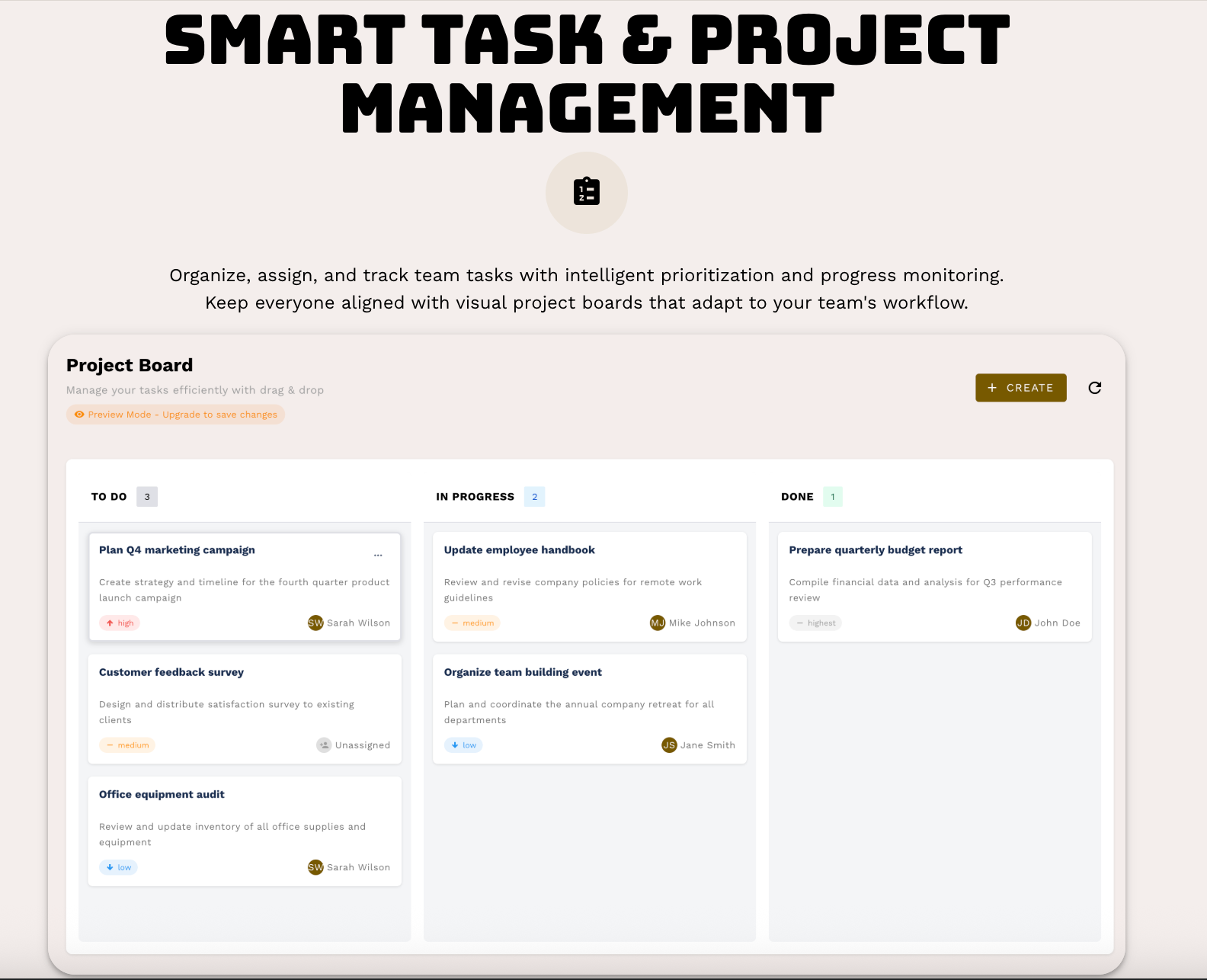Run Weekly Priorities with Asa: One Workplace, Natural‑Language Tasks, Three‑Stage Flow

Small teams don’t need complicated workflows. Asa brings the essentials together—clock in/out, a simple taskboard, and AI workflows—so you can speak your plan and ship more with fewer meetings.
The taskboard uses three clear stages: To‑Do → In Progress → Done. The agent turns natural language into scoped tasks, assigns owners and dates, and keeps the board moving.
Why weekly priorities inside one workplace
- Coherent rhythm: planning, execution, time tracking, and reviews in one place.
- Outcome focus: pick 3–5 weekly outcomes; track them across To‑Do → In Progress → Done.
- Async by default: brief updates beat long standups; the agent compiles what matters.
Asa in one sentence
A complete workplace with clock in/out, a three‑stage taskboard (To‑Do, In Progress, Done), and AI workflows—so natural language becomes assigned, scheduled, and trackable work.
Your small‑team cadence (repeat weekly)
- Monday: Kickoff
- Define 3–5 outcomes with acceptance criteria.
- Speak your plan: “Design hero Monday (Aisha), copy Tuesday (Ken), dev handoff Wednesday; review Thursday.”
- Asa parses the instruction, creates To‑Do cards with checklists, assigns owners, sets dates, and links any dependencies. Team members clock in; work ties to the plan.
- Midweek: Async checkpoint
- Owners update cards directly: move items from To‑Do to In Progress, note “Done / Doing / Blocked.”
- Asa rolls up progress, flags scope creep, and suggests splits or reassignments if someone’s workload spikes. Time spent stays connected to tasks—no scattered spreadsheets.
- Friday: Review and roll
- Close wins in Done; move any active items forward.
- Asa drafts next week’s To‑Do from backlog and In Progress work, preserving context, owners, timing, and links. Clocked hours inform forecasts.
Taskboard workflow (three simple columns)
- To‑Do: Planned work with owners, dates, and checklists.
- In Progress: Active work. Keep WIP low to protect focus.
- Done: Finished items with acceptance criteria met (no ambiguity).
AI workflows: natural language → structured work
- “Ship onboarding emails: Jane writes copy by Tuesday; Dev adds tracking; QA Thursday; launch Friday.”
- Asa creates To‑Do cards + a Launch, assigns owners, sets dates, adds checklists, and links tasks. As work starts, cards move to In Progress; finished items land in Done.
- “Split analytics: track signups and activation separately; keep QA separate; target next Wednesday.”
- Asa refactors one card into three To‑Do items, aligns dates, warns if someone’s WIP is high, and keeps hours attached to the right tasks.
- “Bug: checkout error 842—assign backend, link Sentry, fix by tomorrow.”
- Asa drafts a To‑Do with steps, routes to backend, and logs work as it moves through In Progress to Done.
Outcome‑focused planning template (use this in Monday kickoff)
- Goal: What will be true by Friday?
- Success metric: How will we know?
- Constraints: Deadlines, resources, dependencies.
- Top tasks: 3–7 To‑Dos max; add checklists.
- Risks: What might block progress—and mitigation.
- Owner + date: One clear owner per task; realistic timing.
Checklist to reduce meetings with Asa
- Replace daily standups with 2‑minute in‑card updates.
- Let Asa compile a weekly digest with status, risks, and next steps.
- Spin up focused threads only for blockers; time‑cap and close.
- Use split/merge suggestions to keep scope tight.
- Keep time tracking connected to tasks for clean retros.
What teams get from this
- Faster cycles: clear scope and ownership.
- Better visibility: tasks, progress, and hours in one place.
- Fewer meetings: agent rollups replace status ceremonies.
Try it this week
Run one weekly priorities sprint in Asa. Speak your plan; let the agent draft tasks; move work across To‑Do, In Progress, Done; track time seamlessly; and keep live meetings minimal. If it helps you ship more with less stress, explore plans and pricing.

